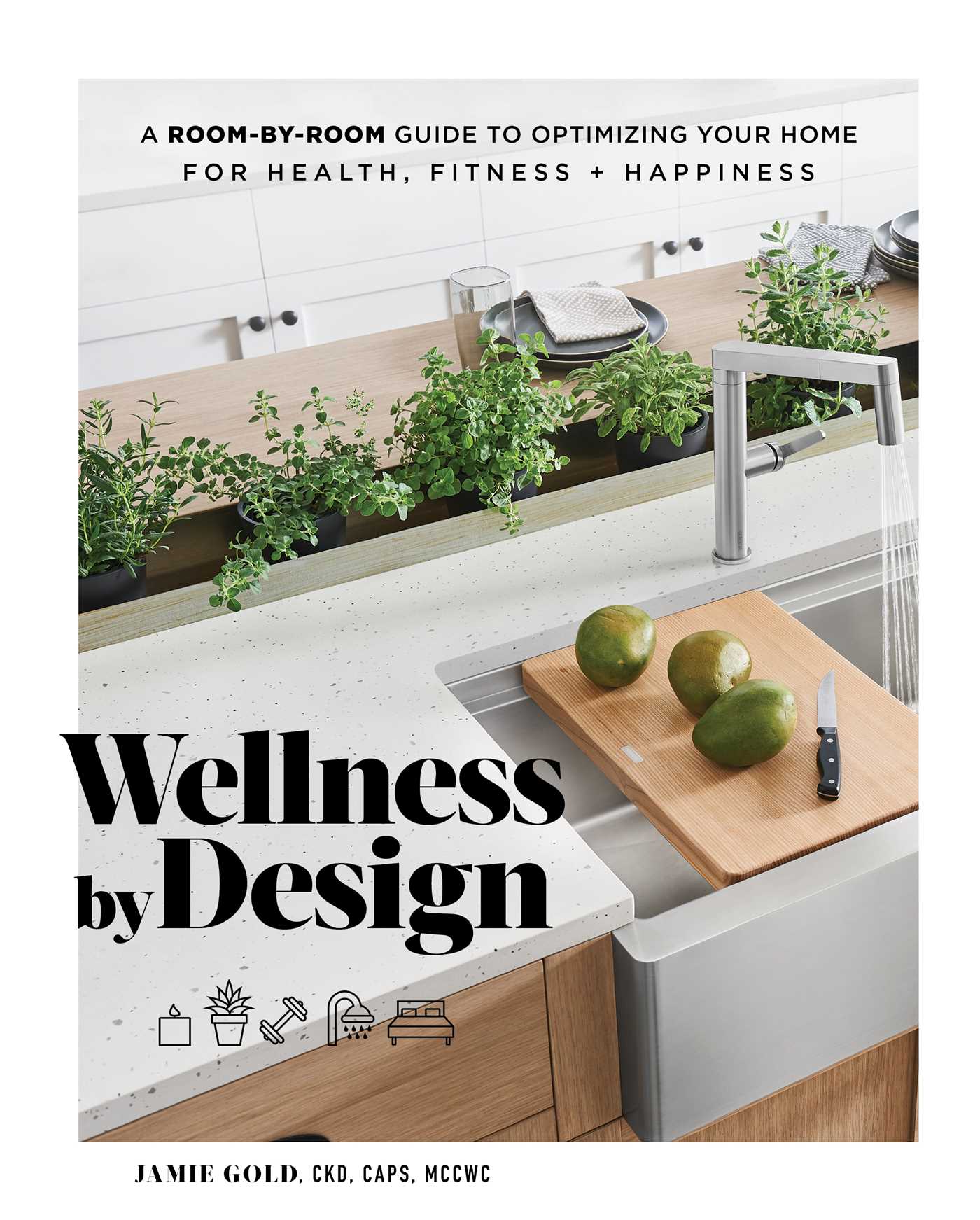Author Jamie Gold has published a new book on wellness design that takes a wholistic, room-by-room approach to healthy living. By Dianne M. Pogoda
In her third book, Wellness By Design — A Room-By-Room Guide To Optimizing Your Home For Health, Fitness And Happiness, Jamie Gold, CKD, CAPS, MCCWC, is out to raise consciousness about the art of wellness — one room at a time.
This is primarily a consumer’s guide to whole-home wellness design, for anyone who wants to live, parent and age in a healthier, more successful way. But it’s also a valuable tool for designers who want to tap into the wellness market, and brands that want to reach consumers or other industry professionals. It offers the professional ways to communicate with the homeowner to create conversation starters and idea generators.
The room-by-room guide covers the whole home, not just the kitchen or bath, and ties together five facets of wellness design: health and fitness, accessibility, functionality, comfort and joy, and safety and security.
“This comes from my CKD training,” said Gold. “It must be safe, first and foremost, before it’s stylish or even functional. And it must be installed correctly. These principles informed the whole book.”

Wellness was a big buzzword before the COVID-19 pandemic struck, and has taken on enormous importance in the past six months, she added. “It is now a part of so many areas of our lives.”
Wellness is a $134 billion industry and, Gold says, it’s only getting started. It’s anticipated to continue robust growth upwards of 8% annually, at least through 2022.
Several factors are driving this movement.
“First, Millennials are very health- and fitness-conscious,” she said. “There’s an overall consciousness about their own spaces, sourcing of materials, sustainability and safe cleaning products. Low maintenance is also very important. They don’t want to expend as much effort to clean, which frees up their time to go outside and enjoy nature, exercise, etc.”
Product selection is also critical going forward, with people investing in their homes with durable products and non-toxic materials that won’t be off-gassing into the space. “Who was thinking of the dangers of phthalates in vinyl flooring?” she said. “No one knows the long-term effects of these kinds of products. It’s safer to design without them.”
Aging Baby Boomers, she said, are also engaging in more health and fitness activities in a big way. They are into endurance athletics like triathlons, marathons and other endurance sports. In fact, the largest demographic for these activities is 40-plus. People are starting to focus more on their own well-being.
Gold noted that the book’s checklists, resources, image and endnotes links are online at her website for those who have a copy in hand, where the link is provided.
The book offers advice for every living space, from a big house to a first apartment, as well as pros and cons of many kinds of products, materials, suggestions and solutions that can be implemented to make the space safer and healthier. For example, porcelain tile is a great wellness material, but it’s not good for standing on for a long time. So, Gold suggests anti-fatigue mats over that kind of tile. The book also features tips for using smart-home technology, voice-activated remote control and connection to caregivers, and sensors for room, lighting and flooring. This is particularly useful for seniors, or anyone living alone.
“Smart home technology, especially voice control, helps people live alone longer, she said.
Wellness By Design is available from Simon & Schuster/Tiller Press ($21.99).
Gold is also the author of New Kitchen Ideas That Work and The New Bathroom Idea Book, both from Taunton Press. She is an NKBA Certified Kitchen Designer, a Certified Aging in Place Specialist, and has worked as a professional kitchen and bath designer for 16 years. She also is a Mayo Clinic Certified Wellness Coach, consulting on wellness design for homeowners and the building industry, and has written for New Home Source, Forbes and Houzz.








